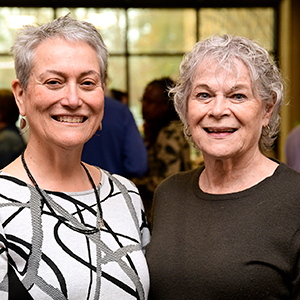A new study by NIEHS scientists suggests that specific parts of an individual’s genome, or complete set of DNA, may be susceptible to mutations caused by exposure to a wide range of chemicals. Further, that susceptibility may increase with age and multiple exposures.

Certain substances — acrylamide, polycyclic aromatic hydrocarbons, and styrene, to name just a few — are broken down by the body into metabolites called epoxides. In addition, epoxides are produced by some industries and represent a type of environmental exposure. The researchers recently discovered that mutations caused by one epoxide were linked to nearly 40 human cancers. The study was published online July 20 in the journal Nucleic Acids Research.
Not all mutations lead to cancer, but knowledge about the mutational risk of epoxides could enhance cancer prevention at the individual level, according to the researchers. In addition, the scientists’ work could pave the way for better measurement of a person’s previous epoxide exposures and lead to greater scientific breakthroughs related to these substances.
Studying potential mutational effects
“We sought to learn more about the potential mutational effects of epoxides by focusing on one called glycidamide, which is formed after exposure to acrylamide, a known carcinogen,” said Dmitry Gordenin, Ph.D., head of the Mechanisms of Genome Dynamics Group at NIEHS. He is the lead author on the paper.
People can be exposed to acrylamide — and eventually its metabolite, glycidamide — by smoking cigarettes, eating heated starchy foods such as fries, and even drinking coffee, among other routes. To understand how glycidamide influences the genetic landscape, the scientists incorporated a research model involving yeast, which is a single-celled organism that can shed light on the mutational effects of chemicals.
Exposure linked to human cancers

“Our team unraveled what we call a mutational motif,” explained Gordenin. “It provides a detailed look at mutational activities of an exposure — in this case, glycidamide. We discovered that the motif we saw in yeast was also present in nearly 40 human cancers, including skin, lung, and liver cancer, as well as in normal tissues. Due to the similarity of many epoxides, insights into how glycidamide affects mutational risk in an individual likely applies to many other exposures.”
The scientists also learned that the mutational load of glycidamide is clock-like, which means that mutations can increase over an individual’s lifetime. The mutational motif they identified can serve as a framework for future research that investigates a broad range of environmental agents — substances that produce epoxides and epoxides themselves — and their cumulative effects. In addition, the motif can reveal levels of mutational activity in individuals, which may provide the clues needed to pinpoint exposures that could be especially risky to human health.
(Jesse Saffron, J.D., is Deputy Director of the NIEHS Office of Communications and Public Liaison.)









